
94% of researchers rate our articles as excellent or good
Learn more about the work of our research integrity team to safeguard the quality of each article we publish.
Find out more
ORIGINAL RESEARCH article
Front. Microbiol., 24 February 2023
Sec. Microbiotechnology
Volume 14 - 2023 | https://doi.org/10.3389/fmicb.2023.1063333
This article is part of the Research TopicExploring the Role of Microorganisms in Silages: Species, Communities, Interactions, and Functional CharacteristicsView all 35 articles
 Roni Ridwan1,2
Roni Ridwan1,2 Mohammed Abdelbagi2,3,4
Mohammed Abdelbagi2,3,4 Ahmad Sofyan2,5
Ahmad Sofyan2,5 Rusli Fidriyanto1,2,4
Rusli Fidriyanto1,2,4 Wulansih D. Astuti1,2
Wulansih D. Astuti1,2 Ainissya Fitri1,2
Ainissya Fitri1,2 Mohammad M. Sholikin2,5
Mohammad M. Sholikin2,5 Rohmatussolihat1,4
Rohmatussolihat1,4 Ki A. Sarwono1,2
Ki A. Sarwono1,2 Anuraga Jayanegara2,6
Anuraga Jayanegara2,6 Yantyati Widyastuti1*
Yantyati Widyastuti1*Silage fermentation is naturally carried out by lactic acid bacteria (LAB) to mainly produce lactic acid (LA) and other organic acids as preservatives. Along with fermentation time, the growth of LAB will replace and suppress undesirable microorganisms. This meta-analysis study aimed to explore silage microbiome differentiated by LAB inoculants and type of raw materials. A total of 37 articles with 185 studies and 475 datasets were used for building up the meta-database. Data were subjected to the mixed model methodology. The parameters observed were silage quality and silage microbiome post-ensiling process. Results revealed that four bacterial genera along with Weissella dominated the post-ensiling process. The addition of lactic acid inoculants in the silage has increased the abundance of Lactobacillus spp. and decreased the Shannon index significantly. Moreover, the abundance of both L. plantarum and L. buchneri increased, and subsequently, Weissella, Pseudomonas, Proteobacteria, pH value, ammoniacal nitrogen (NH3-N), coliforms, and the yeasts were decreased significantly due to the addition of LAB inoculants in silage (p < 0.05). Environmental factors such as temperature affected the existence of Pseudomonas, Exiguobacterium, and Acinetobacter. However, the dry matter, LA, acetic acid (AA), the ratio of LA to AA, and the LAB population were enhanced significantly (p < 0.05). Among the LAB types, the lowest abundance of Pseudomonas was due to the LAB group, while the lowest abundance of Weissella and Proteobacteria was due to the addition of the combined LAB group. In conclusion, the addition of LAB is effectively enhancing the silage microbiome and silage quality by altering bacterial diversity and the metabolic products of the silage materials for safe preservation.
Silage represents one of the promising feed products for ruminants in the world. The practice of making silage started a long time ago; however, ensiling remains the main method for forage preservation to provide a palatable and available feed source that is less affected by various weather conditions (Zhang et al., 2021). Moreover, silage is used to seek efficiency in milk production on farms using silage in the diet of livestock throughout the year (Bernardes and Rêgo, 2014). Efforts on providing good quality feed all year round, such as silage, is necessary to guarantee the good welfare of farm animals (Keeling et al., 2019).
Ensiling is a complex process involving the role of microorganisms, which can be referred to as the microbiome, that largely determine the quality of silage produced. Starter cultures such as silage inoculum are important additives to ensure the perfect ensiling process. It is believed that lactic acid bacterial (LAB) strains are good candidates for advancing the fermentation process of their fast growth rate, high resistance to low pH conditions, and quick production of desirable substrates such as lactic acid (LA) over a wide range of temperature changes. Inoculation of low-temperature tolerant LAB at ensiling could stimulate favorable fermentation and reconstruct the bacterial community for better preservation of highly moist oat silage nutrients (Chen et al., 2020). Jaipolsaen et al. (2022) reported the importance of identifying suitable starter cultures, understanding the natural flora of epiphytic LAB on plants, and applying them together to optimize cost-effective silage production. Among the most used starter cultures of LAB is Lactobacillus plantarum (Keshri et al., 2018; Mu et al., 2020). Completely different microbial flora and their successions during ensiling were observed using a recent methodology that provides information regarding the microbial processes underlying silage formation to achieve high-quality silage production (Guo et al., 2018).
Microorganisms in silage are important indicators of silage quality; however, their presence is strongly influenced by the available metabolite derived from the type of material used for the manufacture of silage. There are various kinds of forage materials, with various metabolite contents, used to make silage. Inoculation of different starter cultures altered the microbial composition and fermentative metabolites in ensiled whole-crop corn silage in very different ways. The correlations between metabolites and bacterial species can provide important scientific information on screening targeted LAB for the modulation of silage fermentation. Profiling of silage microbiome and metabolome can improve our current understanding of the biological process of silage formation (Xu et al., 2019) and can be used to evaluate ensiled forages not only in terms of fermentation quality but also based on nutritional and functional metabolites that are beneficial to animal health and welfare (Guo et al., 2018). We hypothesized that several LAB inoculants could have various effects on the silage microbiome and silage quality based on the raw materials used in silage making. Therefore, the present meta-analysis study aimed to explore silage microbiome differentiated by LAB inoculants and types of raw material used in silage making.
In this study, the database was built by collecting the datasets from previously published articles. In detail, literature was obtained through a number of steps, i.e., identification and screening, and then valid articles were inserted into an excel spreadsheet. During the identification process, the search engines, namely Google, Scopus, and Google Scholar, were used for searching the datasets of the previously published articles. The keywords used were lactic acid bacteria, silage quality, bacterial diversity, and fermentation.
The identification process was carried out based on the titles of the collected articles. In this stage, we put general criteria in the article that would be involved in the database. These criteria are as follows: (1) Article must be written in the English language; (2) Only published articles; (3) Collected article must contain a control treatment with at least one experiment of LAB addition among their treatments; and (4) The collected articles must contain at least one parameter on silage microbiome or at least one parameter on silage quality. Here, in this stage, we obtained 181 articles.
The process was continued by scanning the entire abstract of each of the collected articles to ensure that the article is valid to be used in this stage. At this stage, 54 articles were obtained. The screening process was done by reading carefully the entire content of each collected article to determine which one of the collected articles is valid to be inserted into the database. The literature obtained at this stage was 37 articles with 185 studies and 485 datasets. All valid articles were inserted into an excel spreadsheet. Information about articles used in the database is presented in Table 1.
While creating the excel spreadsheet, datasets were divided into main categories which are main and branched cells. In the main cells, we included information on authors, year of publication, treatments, studies, doses, and substrates used as raw materials of the experience. Information on observed parameters was inserted in the branched cells of the created excel spreadsheet. The observed parameters include the chemical composition of silage material (DM, dry matter content; OM, organic matter; CP, crude protein; NDF, neutral detergent fiber; ADF, acid detergent fiber; WSC, water-soluble carbohydrates; EE, ether extract; ASH, the ash content in the fresh material; DM recovery, cellulose and hemicellulose; and ADL, acid detergent lignin), silage quality (pH value; LA, lactic acid; AA, acetic acid; PA, propionic acid; BA, butyric acid; AS, aerobic stability; LAB, lactic acid bacteria; AB, aerobic bacteria; yeasts, yeasts and molds, molds, and the starch content), silage microbiome, and information on sequencing. All the data of the targeted parameters were inserted into the created excel sheet to be ready for evaluation.
The articles were selected following the protocol of Preferred Reporting Items for Systematic Reviews and Meta-Analyses (PRISMA) (Moher et al., 2009; Mikolajewicz and Komarova, 2019), and data analysis were carried out using mixed model methodology as described by Abdelbagi et al. (2021) and Irawan et al. (2021). In this methodology, doses and LAB types included in the experiments were treated as a fixed factor, while the studies were treated as a random factor. Different values and means were accepted to be significant if the p-value is <0.05. As shown in Table 1, there were many types of substrates used for ensiling. In this study, to investigate the influence of the substrate, we calculated the interaction effects between the substrate and LAB types as well as doses of LAB, as presented in Tables 2, 3. The dataset presentation in figures was carried out using Microsoft excel 2013. Data of the silage microbiome were extracted from the figures using GetData digitizer version 2.26.0.20 software (http://getdata-graph-digitizer.com/). Before analyzing the relationships among response parameters and treatments, silage quality and silage microbiome were transformed into relative changes in treatment and control. The relationships between parameters and treatments were analyzed using hierarchical cluster analysis and were visualized using the heatmap.2 function from the gplots package in the R Console Version 4.2.1 (R Core Team, 2022).
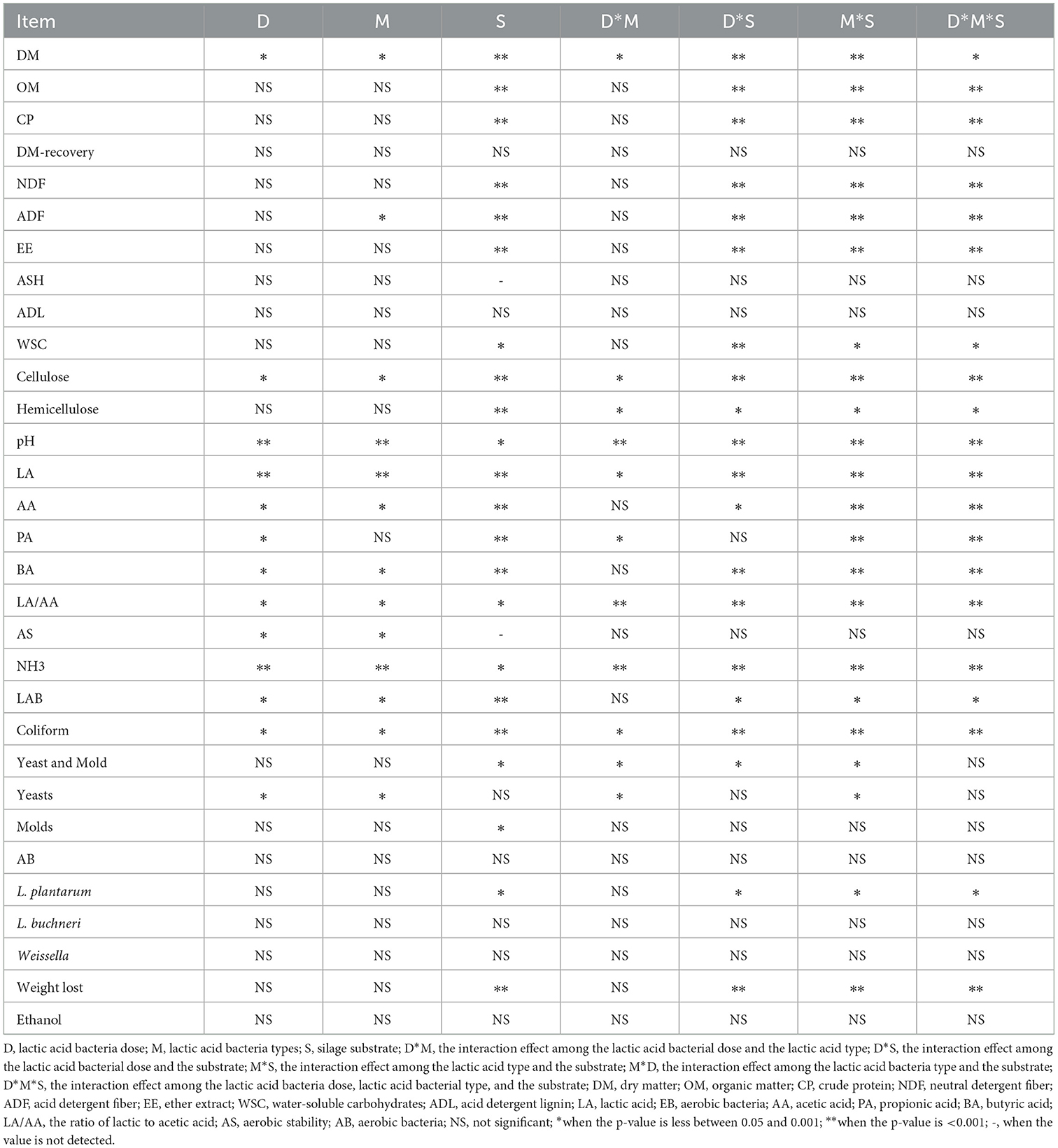
Table 2. Interaction effects of lactic acid bacteria dose, types, and silage substrates on chemical composition and silage quality.
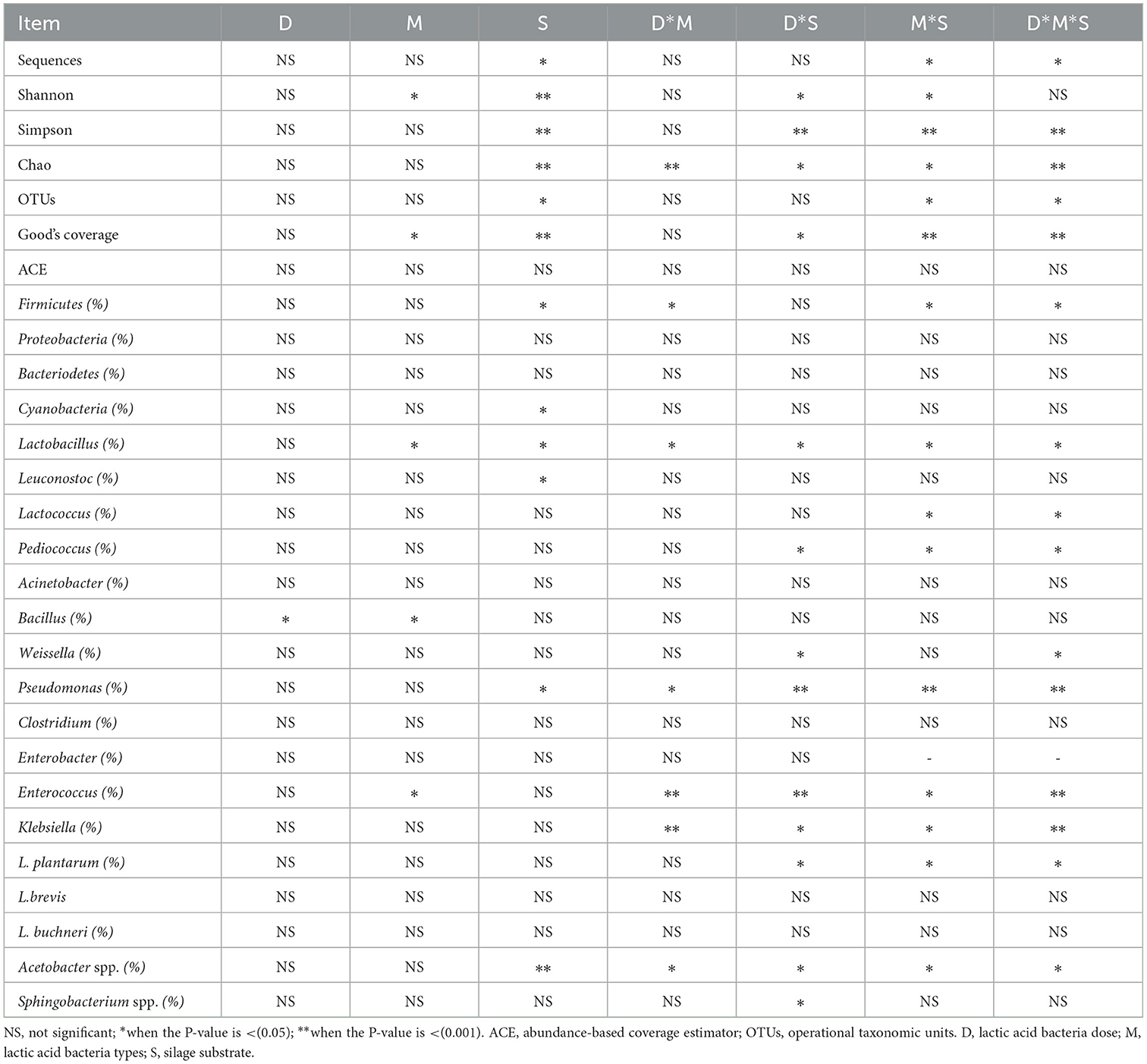
Table 3. Interaction effects of the lactic acid dose, microbe type, and substrate on the bacterial diversity of the silage.
The studies used for structuring the meta-analysis database are shown in Table 1. Descriptive statistic of the chemical composition of raw materials before the ensiling process is presented in Table 4. Effects of LAB dose on silage microbiome and silage quality are presented in Tables 2, 5, respectively. Effects of LAB types on silage microbiome and silage quality are shown in Tables 6, 7, respectively. Interaction effects among LAB doses, LAB types, and the raw material on silage microbiome and silage quality are given in Tables 2, 3, respectively. The differences in substrates in the silage affected the chemical composition and quality of silages (Table 2) as well as the value of Shannon, Simpson, OTUs, and some bacteria (Table 3).
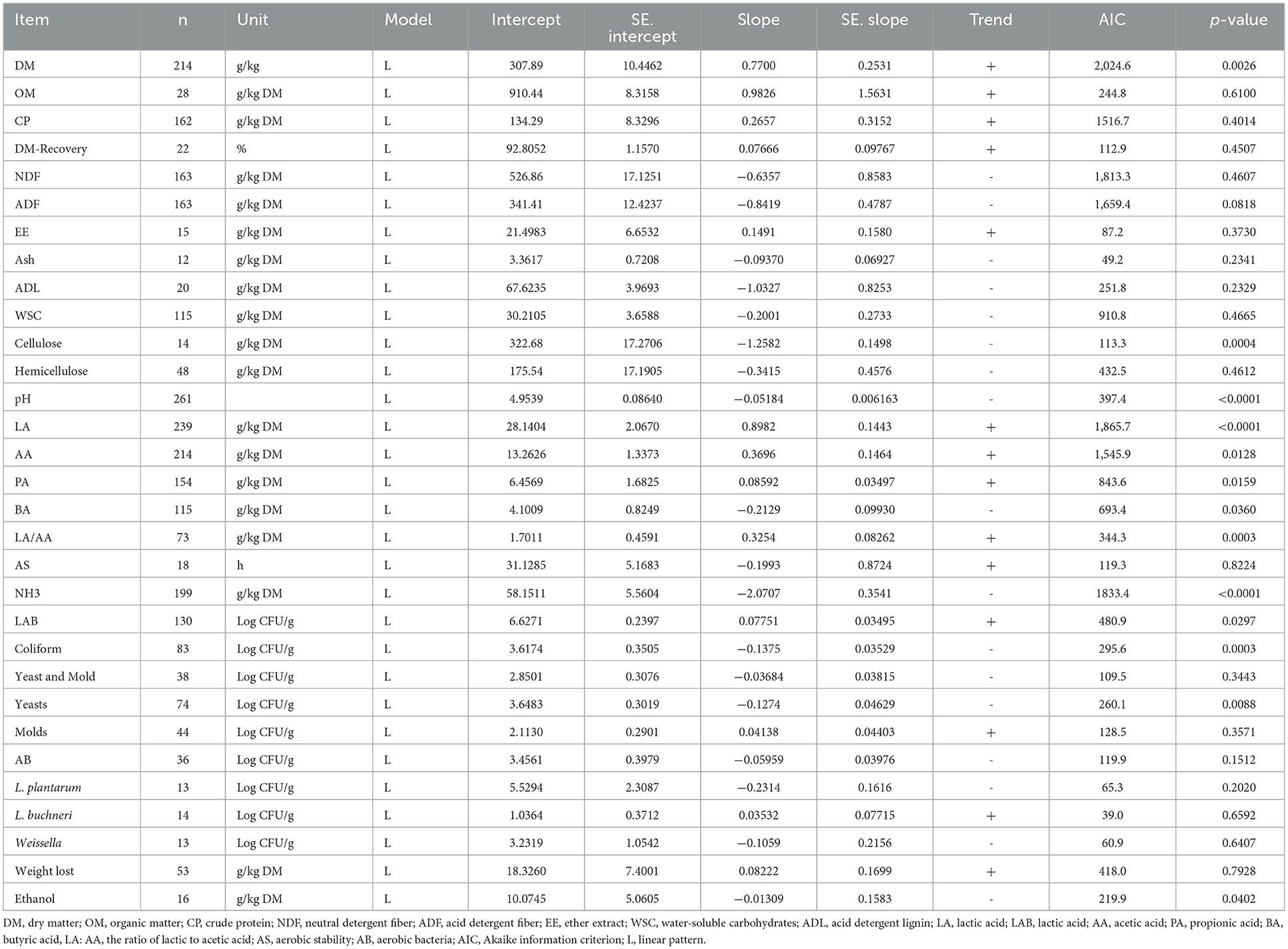
Table 5. Effects of lactic acid bacteria on chemical composition and fermentation characteristics post-ensiling process.
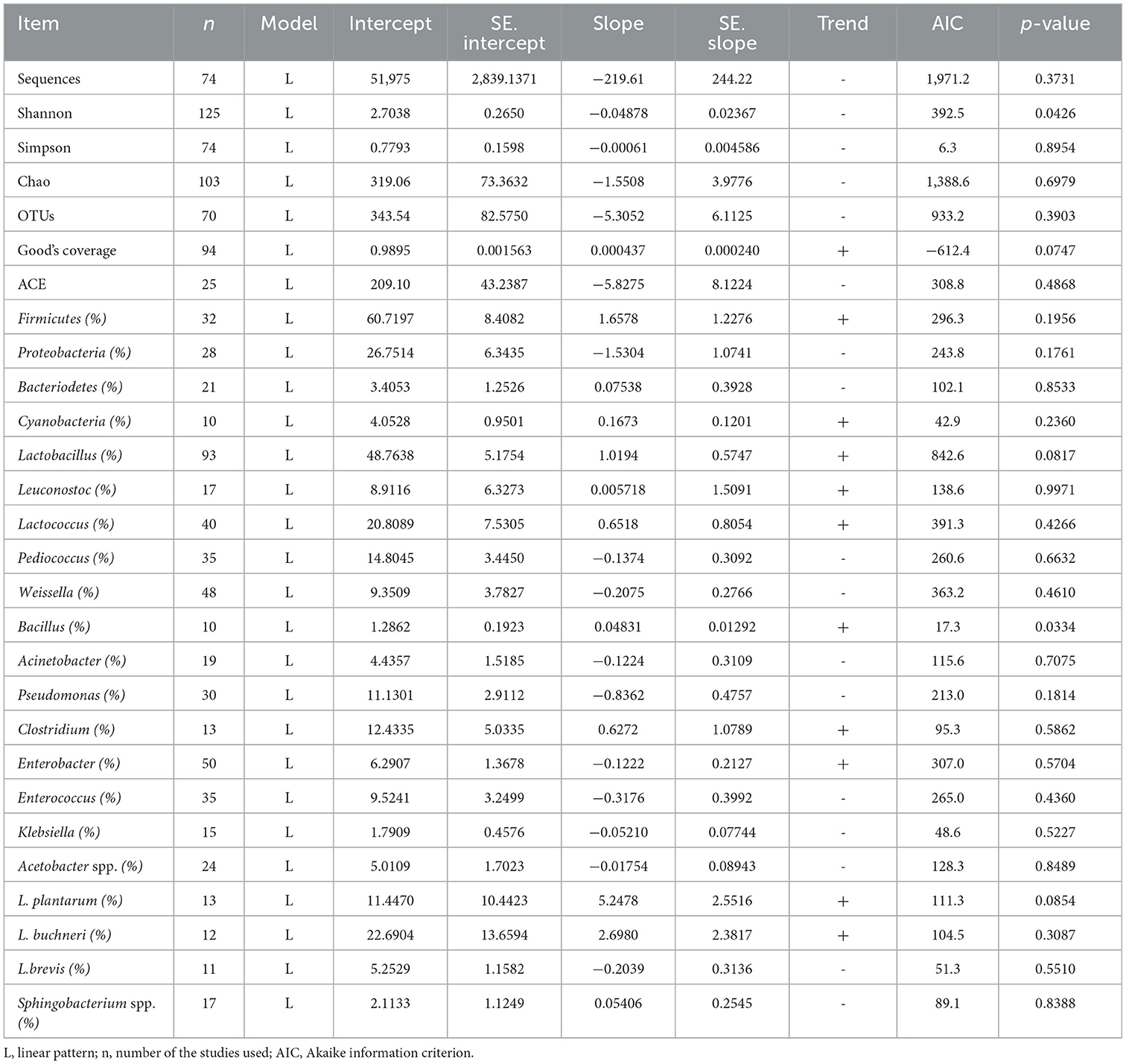
Table 7. Effects of lactic acid bacterial addition on the relative abundance and bacterial communities' post-ensiling process (%).
The patterns of the relationship between the characteristics of inoculum and the physicochemical properties of silage are visualized in Figure 1. The treatments showed to impact significantly on silage microbiome and silage quality. However, phylum Firmicutes and the genera of Pediococcus, Proteobacteria, Pseudomonas, and Weissella dominated the post-ensiling process. Either LAB or combined LAB group in the silage increased the abundance of LAB, especially Lactobacillus; however, Proteobacteria and non-lactic acid-producing bacteria become lower than those in control (Figure 1). Domination of LAB in inoculated silage implied diversity index decreased (Table 8). Moreover, both L. plantarum and L. buchneri were increased, and subsequently, Weissella, Pseudomonas, Proteobacteria, the pH, and the ammonia nitrogen decreased significantly due to the addition of LAB in the silage (p < 0.05) (Table 8). However, LA, AA, the ratio of LA to AA, and LAB counts enhanced significantly due to the inclusion of LAB inoculants (p < 0.05) (Table 6).
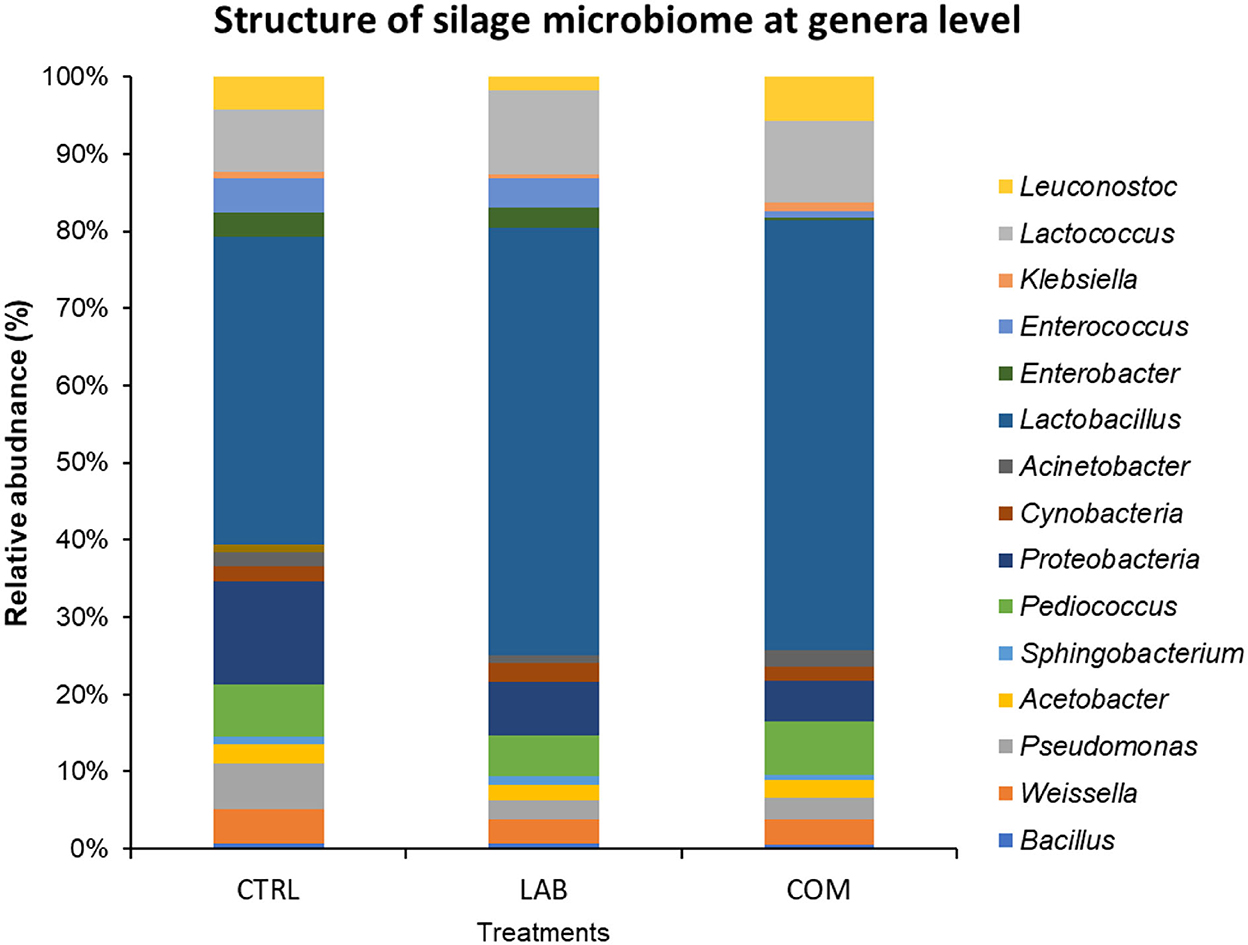
Figure 1. Comparison structure of silage microbiome at genera level between control and inoculant addition.
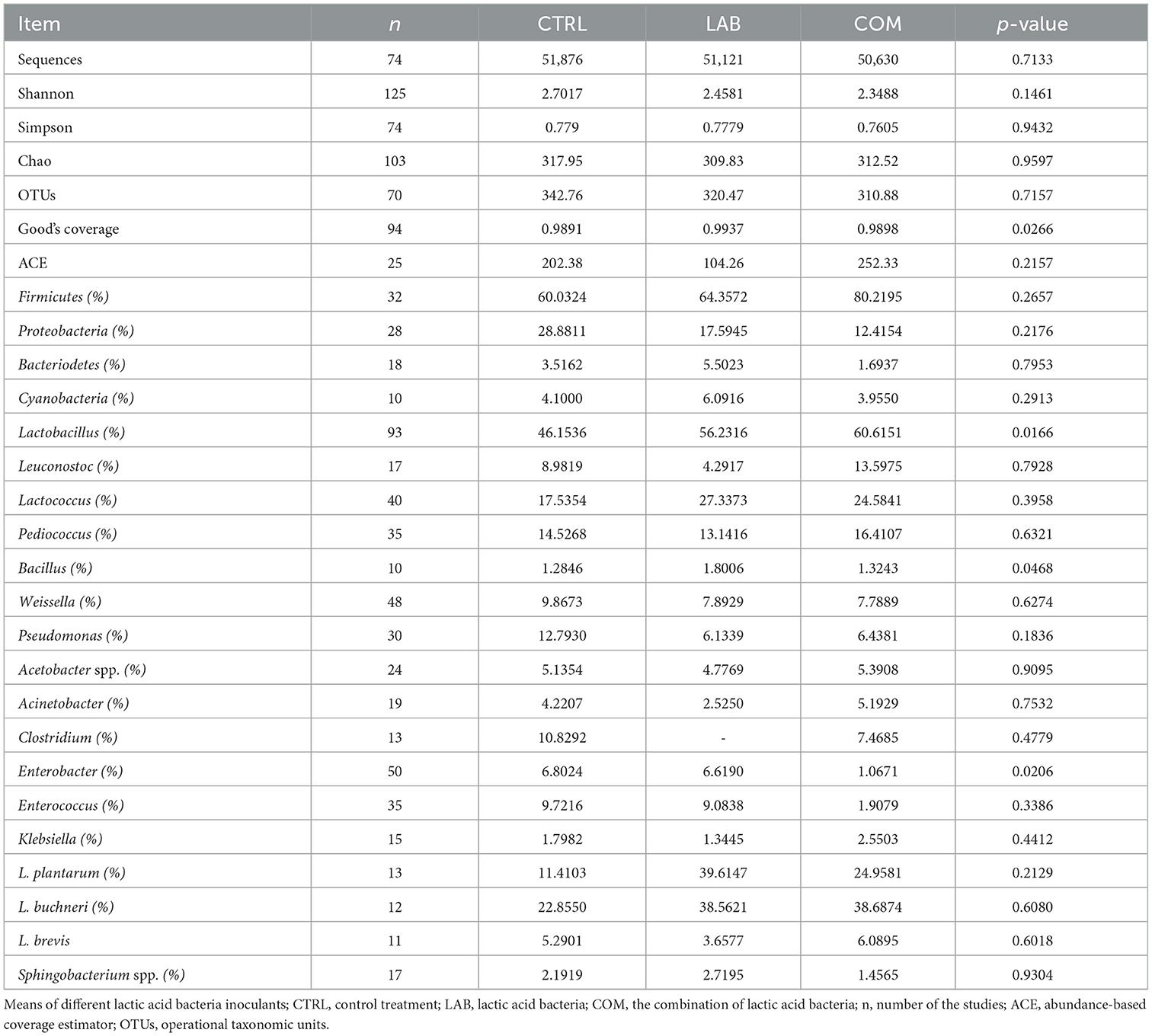
Table 8. Effects of lactic acid bacterial types on the relative abundance bacterial communities of silage post-ensiling process (%).
Among LAB types, the lowest abundance of Pseudomonas was scored when treated with the LAB group, while the lowest abundance of Weissella and Proteobacteria was due to the addition of the combined LAB group. There was no significant effect of treatments on WSC, hemicellulose, and aerobic stability. Treatment with the combined LAB group (COM) has resulted in the lowest pH value, the highest concentration of LA, the highest ratio of LA to AA, and the highest LAB count in silage materials as compared with the LAB treatment. In contrast, the lowest concentration of NH3-N and the highest concentration of LAB in silage materials were obtained due to the inclusion of the LAB group.
Patterns of the relative change in silage quality and microbiome parameters for each treatment are visualized in Figure 2. The increased organic acid (LA and AA) and the decreased acetic acid in the treated silage were categorized in the contrast cluster (Figure 2A), while dynamic changes in non-lactic acid bacteria in the treated silage were categorized in the same cluster (Figure 2B).
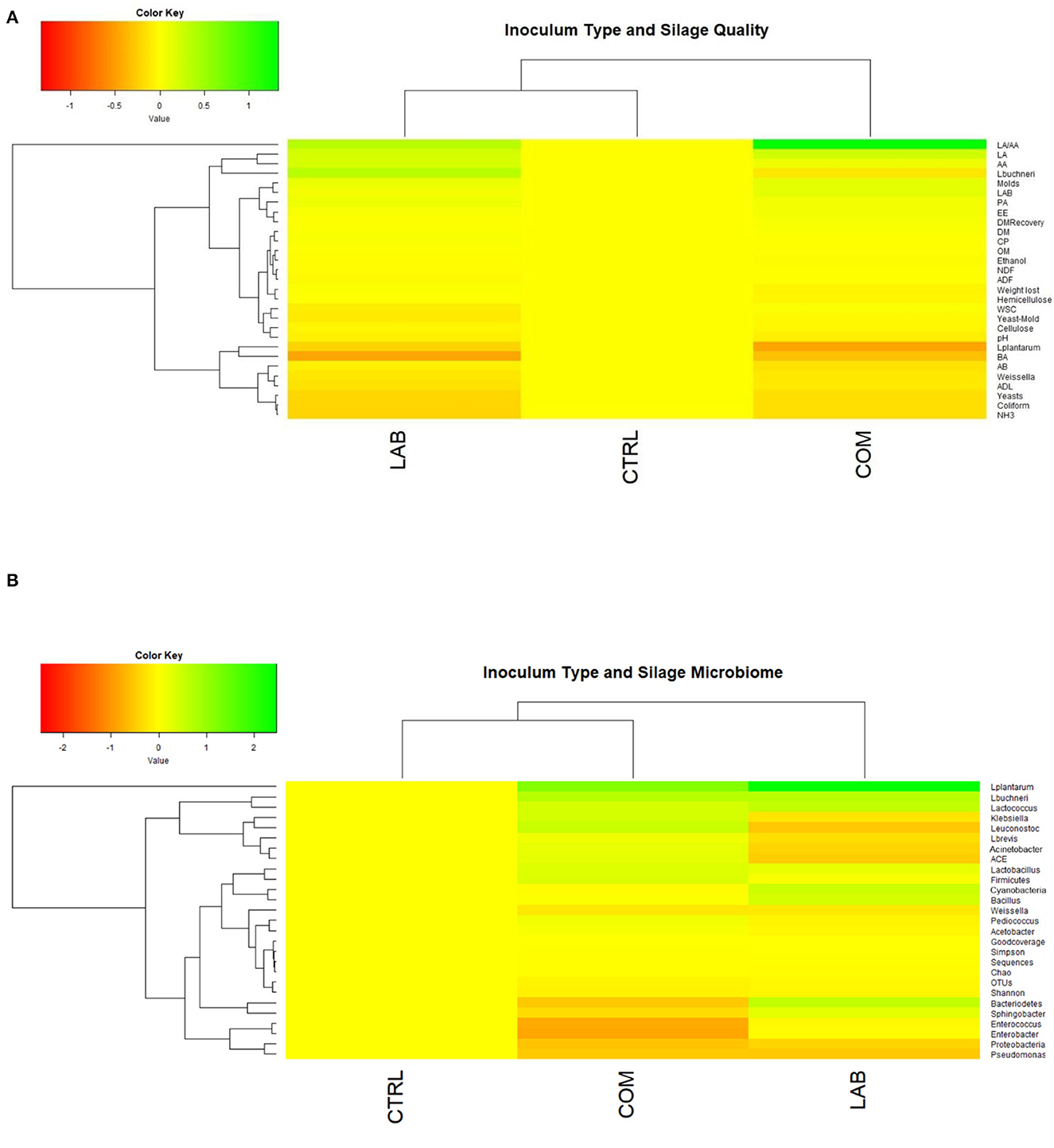
Figure 2. Dendro-heatmap visualized the relationship patterns between inoculum types addition with silage quality (A) and between inoculum types addition with silage microbiome (B). Colors key indicates the treatment effect from declining (red) to increasing (green) compared to the control. CTRL, control treatment without lactic acid bacterial inoculant; LAB, lactic acid bacteria addition; COM, the addition combining different lactic acid bacterial types. DM, dry matter; OM, organic matter; CP, crude protein; NDF, neutral detergent fiber; ADF, acid detergent fiber; EE, ether extract; WSC, water-soluble carbohydrates; ADL, acid detergent lignin; LA, lactic acid; AA, acetic acid; PA, propionic acid; BA, butyric acid; LA/AA, ratio of lactic to acetic acid; AB, aerobic bacteria; ACE, abundance-based coverage estimator; OTUs, operational taxonomic units.
The chemical composition of raw materials before the ensiling process is shown in Table 4. The mean values of DM, CP, and WSC were 303.4, 136, and 64 g/kg FW, respectively, which were in the same range as that in the previous report of Wang X. et al. (2022). It is stated that several factors could influence forage content, including fertilization, the season of harvesting, irrigation, and sowing density (Mu et al., 2020).
Based on the results of this study, it can be seen that the addition of LAB has decreased significantly the richness of the Shannon index and influenced the microbiome of silage materials (p<0.05). As shown in Tables 7, 8, Firmicutes, Pediococcus, Proteobacteria, Pseudomonas, and Weissella are the greatest composer of silage microbiome of both control and LAB treatments post-ensiling process. When LAB inoculants were added, the relative abundances of Pseudomonas, Proteobacteria, and Weissella were reduced by ~50, 38, and 20%, respectively. The reduction of the Shannon index is associated with the rapid decline of pH value, resulting in inhibiting undesirable microorganisms. The result was in line with Ridwan et al. (2015) and Mu et al. (2022), who reported a significant decrease in the Shannon index due to the addition of LAB inoculants in the silage. In contrast, the reduction of Weissella spp. is attributed due to the lack of compatibility between additives and raw materials (Mu et al., 2022).
It is reported that Weissella spp. commonly present in the fresh forage or silage, initiating lactate fermentation in silage and creating an appropriate environment for developing the Lactobacilli (Mu et al., 2022). Similarly, Weissella, Pediococcus, and Lactococcus are the predominant bacteria; thereafter these bacteria would be shifted gradually by Lactobacilli due to the greater decline of pH value (Mu et al., 2020). In contrast, the abundance of Firmicutes mass was increased by 7% and 33% in LAB treatment and the combination of different types of LAB treatment. This is perhaps because Firmicutes is a great acid-producing hydrolytic phylum that can grow quickly at low pH conditions (Chen et al., 2020). The same result was observed by Zi et al. (2021).
Moreover, LAB inoculants have decreased the relative abundance of Enterococcus. The result was consistent with Zhang et al. (2021). Compared with LAB treatments, the relative abundance of Cyanobacteria, Acinetobacter, and Enterobacter in the control silage was approximately about 4.1, 4.2, and 6.8, respectively. The dominance of Cyanobacteria in the control silage indicates the worth condition of the silage (He et al., 2020). Therefore, the addition of combined species of LAB could be used in the future as an effective method for improving silage conditions, resulting in improving silage environments and improving bacterial dynamics. Cyanobacteria are known as a photosynthesizing phylum of bacteria found in diverse environments with prolific growth and a wide variety of generated products. Furthermore, the addition of LAB inoculants has numerically reduced the abundance of Enterobacter, while the lowest abundance was scored due to the addition of the combination of different LAB species. Therefore, this indicates that LAB inoculants could prevent silage from spoilage. It is reported that Enterobacter converts LA to AA and other organic acids (Zi et al., 2021). Acetobacter spp. contribute to producing anaerobic conditions. The genus Enterobacter is known to cause silage spoilage (Jaipolsaen et al., 2022).
As shown in Tables 5, 7, the addition of LAB is effective in improving silage preservation by increasing the abundance of Lactobacillus, L. buchneri, and L. plantarum. It is known that some Lactobacillus is a homofermentative LA-producing bacteria, with a key role in inhibiting microbial activity by rapid acidification in ensiling proses (Mu et al., 2020). Therefore, we observe a numerical reduction of Clostridium spp., coliform, and yeasts due to the addition of LAB inoculants in the silage (Table 8). The addition of LAB has been proven to improve silage quality significantly by increasing LA, AA, the ratio of LA to AA, and the LAB count in the silage and decreasing pH value, NH3-N, and cellulose. The reduction of pH value is associated with inhibiting the undesirable microorganisms, including coliform, and the yeasts and some LAB, such as streptococci, in silage due to their low tolerance to the lower pH condition (He et al., 2019). The result was in line with Guo et al. (2020).
Indeed, the decrease of NH3-N is due to the effects of Pseudomonas and Proteobacteria. Pseudomonas plays a crucial role in degrading organic materials, while Proteobacteria are essential in degrading the CP, resulting in lower NH3-N (Mu et al., 2022). Enterobacter spp. can ferment amino acids and produce NH3-N. So, all these species function to reduce the concentration of the NH3-N of silage materials. In contrast, the high concentration of NH3-N in silage is a good indicator of the excessive breakdown of protein in silage. The NH3-N mass which is above 40 g/kg indicates a good quality of silage materials (Mu et al., 2020). Moreover, Li P. et al. (2018) and Guan et al. (2020a) reported a significant decrease in the number of both the coliform and the yeasts as affected by the addition of the LAB.
In contrast, we did not observe significant effects of LAB addition on WSC. WSC is considered a limiting factor for LA production. It is known that LAB can metabolize the WSC into various organic acids, leading to produce more LA which significantly improves the conditions for the ensiling process (Chen et al., 2021). In addition, this response might also be due to the differences in substrates used in the silage. In this meta-analysis study, the substrates affected the WSC concentration. However, the present study is concerned with the influence of LAB and its mixtures on silage quality and bacterial diversity. Therefore, further studies are needed to diverge certain substrates used in the silage.
It is suggested that many factors could influence the microbial diversity of silage, including raw materials, environmental temperature, and type of inoculant. For example, raw materials were found to significantly influence bacterial abundance at the genus and phylum level in different ways (Du et al., 2021). In addition, Pantoea agglomerans, Pseudomonas spp., Pseudomonas koreensis, Serratia liquefaciens, and Pseudomonas coleopterorum were suggested to be the most dominant species of silage made from corn (Du et al., 2021), while Acinetobacter spp., P. agglomerans, Enterobacter spp., Streptomyces alboniger, and L. plantarum were the most undetectable species of silage material post-ensiling process. The addition of L. plantarum in Sainfoin silage has been shown to promote the growth rate of L. acetotolerans, L. buchneri, L. plantarum, L. pentosus, and Clostridium tyrobutiricum (Xu et al., 2020). Furthermore, Lactobacillus spp. and Bacillus sp. were the most common spoilage organisms in silage of welted rice straw that is treated by L. plantarum (Wang et al., 2016).
The addition of L. plantarum also has been shown to reduce microbial diversity as indicated by the reduction of the Shannon index. Previous research conducted a study on the effects of different regions or different LAB types on the whole-plant maize silage. The authors found that Weissella was the dominant epiphytic bacteria of raw materials Ziyun and Weinning, while Lactobacillus was prevalent in Guanling (Huang et al., 2021). In contrast, the effects of environmental temperature on bacterial diversity and the fermentation process were previously studied by Wang et al. (2019). The study concluded that Pseudomonas, Exiguobacterium, and Acinetobacter were more abundant in silages stored at 30°C than 15°C. In addition, Zhang (2018) observed that the inclusion of LAB improved the fermentation quality of alfalfa silage stored at 20°C and 30°C, while ensiling of alfalfa at 40°C is difficult because of Garciella. Since both Pseudomonades and Exiguobacterium are undesirable strains, the relatively lower temperature is an effective method for preserving silage materials. This means that the low temperature, i.e., between 15°C and 30°C, is another technology that could be used effectively to inhibit the undesirable microbes in silage. Therefore, this indicates that many factors could influence the bacterial communities of silage after the ensiling process, including raw material, LAB inoculants, and environmental temperature. The addition of LAB inoculants has been shown to increase the abundance of Lactobacillus and increase the abundance of L. plantarum and L. buchneri (Figures 1, 2B). This has resulted in enhancing silage quality by increasing LAB count and subsequently LA, AA, and the ratio of LA to AA. The increase of LAB has resulted in a significant reduction of Coliform, yeasts, and NH3-N concentration of silage materials. This was consistent with Mu et al. (2020), Mu et al. (2022), and Xiong et al. (2022).
According to Mu et al. (2022), the addition of LAB has resulted in a positive correlation with W. cibaria, Erwinia sp., Ewingella americana, Paenibacillus sp., and L. acetotolerans. On the contrary, L. buchneri, L. plantarum, L. paralimentarius, L. buchneri, and L. nodensis were negatively correlated with Erwinia sp., Ewingella americana, and L. acetotolerans that can survive under lower pH conditions, while Enterobacteriaceae can survive and compete with LAB to utilize the WSC as a primary energy source (Pereira et al., 2007). It is reported that Enterobacteriaceae degrade LA into acetate, succinate, and some endotoxins (Zhao S. et al., 2021; Wang W. et al., 2022). Wang et al. (2022) found a positive correlation between Enterobacteriaceae, pH, and NH3-N, while LA and WSC were negatively correlated. Enterobacter and LAB compete with each other for energy sources of WSC, but which factor causes the dominance of LAB is still unknown yet. It is probably due to the facultative anaerobic nature of Enterobacteriaceae. Anaerobic conditions provoke Enterobacteriaceae to use WSC as a fermentative substrate, while oxygen exposure conditions of the respiratory process become dominant (Sarkar and Mohan, 2020). Molecular approaches such as NGS are one of the tools that have provided many insights into investigating microbiome diversity in silage fermentation. Indicators of the alpha diversity index, including Chao1 and Shannon, were used to determine the relative abundance and diversity indices of bacterial communities in the silages (Wang X. et al., 2022). Due to the lack of information on the correlation between bacterial communities of silage and the physiochemical properties of silage, this study has limitations.
The LAB inoculants are effective means of altering the bacterial community of silage, i.e., enhancing the dominance of Lactobacillus spp. and decreasing the diversity index of silage microbes. Phylum Firmicutes and genera Pediococcus, Proteobacteria, Pseudomonas, and Weissella are the most dominant bacteria of silage materials. Moreover, LAB inoculants are an effective method in elevating silage fermentation quality by increasing the relative abundance of L. plantarum and L. buchneri, LA, AA, the ratio of LA to AA, and LAB counts, and decreasing the pH and NH3-N values of silage materials. Therefore, our results suggest that LAB inoculants are the best recommendation for improving sustainable feed preservation and silage quality by altering the bacterial communities and enhancing favorable fermentation products during ensiling.
The original contributions presented in the study are included in the article/supplementary material, further inquiries can be directed to the corresponding author.
RR: supervision, reference collection, investigation, rechecking the metadata, manuscript correction, and correlation analysis. MA: data collection, data input, investigation, correlation analysis, statistical analysis, and writing the original draft. AS: figure visualization, reference collection, rechecking the metadata, and manuscript correction. RF, WA, AF, MS, R, and KS: reference collection, investigation, rechecking the metadata, correlation analysis, and manuscript correction. AJ: rechecking the metadata, correlation analysis, and manuscript correction. YW: supervision, investigation, rechecking the metadata, and writing and reviewing the manuscript. All authors contributed to the article and approved the submitted version.
The authors are grateful to the Research Center for Applied Zoology, National Research and Innovation Agency (BRIN) for their help in this study. The authors also are grateful to Research Center for Animal Husbandry, BRIN for supporting this study.
The authors declare that the research was conducted in the absence of any commercial or financial relationships that could be construed as a potential conflict of interest.
All claims expressed in this article are solely those of the authors and do not necessarily represent those of their affiliated organizations, or those of the publisher, the editors and the reviewers. Any product that may be evaluated in this article, or claim that may be made by its manufacturer, is not guaranteed or endorsed by the publisher.
Abdelbagi, M., Ridwan, R., and Nahrowi Jayanegara, A. (2021). The potential of nitrate supplementation for modulating the fermentation pattern and mitigating methane emission in ruminants : a meta-analysis from in vitro experiments the potential of nitrate supplementation for modulating the fermentation pattern and. IOP Conf. Ser. Earth Environ. Sci. 902, 1–7. doi: 10.1088/1755-1315/902/1/012023
Bai, J., Ding, Z., Ke, W., Xu, D., Wang, M., Huang, W., et al. (2021). Different lactic acid bacteria and their combinations regulated the fermentation process of ensiled alfalfa : ensiling characteristics, dynamics of bacterial community and their functional shifts. Microb. Biotechnol. 14, 1171–1182. doi: 10.1111/1751-7915.13785
Benjamim da Silva, É., Costa, D. M., Santos, E. M., Moyer, K., Hellings, E., and Kung, L. (2021). The effects of Lactobacillus hilgardii 4785 and Lactobacillus buchneri 40788 on the microbiome, fermentation, and aerobic stability of corn silage ensiled for various times. J. Dairy Sci. 104, 10678–10698. doi: 10.3168/jds.2020-20111
Bernardes, T. F., and Rêgo, A. C. (2014). Study on the practices of silage production and utilization on Brazilian dairy farms. J. Dairy Sci. 97, 1852–1861. doi: 10.3168/jds.2013-7181
Chen, D., Zheng, M., Guo, X., Chen, X., and Zhang, Q. (2021). Bioresource Technology Altering bacterial community : A possible way of lactic acid bacteria inoculants reducing CO2 production and nutrient loss during fermentation. Bioresour. Technol. 329, 124915. doi: 10.1016/j.biortech.2021.124915
Chen, L., Bai, S., You, M., Xiao, B., Li, P., and Cai, Y. (2020). Effect of a low temperature tolerant lactic acid bacteria inoculant on the fermentation quality and bacterial community of oat round bale silage. Anim. Feed Sci. Technol. 269, 114669. doi: 10.1016/j.anifeedsci.2020.114669
Du, Z., Sun, L., Chen, C., Lin, J., Yang, F., and Cai, Y. (2021). Exploring microbial community structure and metabolic gene clusters during silage fermentation of paper mulberry,a high-protein woody plant. Anim. Feed Sci. Technol. 275, 114766. doi: 10.1016/j.anifeedsci.2020.114766
Du, Z., Sun, L., Lin, Y., Chen, C., Yang, F., and Cai, Y. (2022). Use of Napier grass and rice straw hay as exogenous additive improves microbial community and fermentation quality of paper mulberry silage. Anim. Feed Sci. Technol. 285, 1–15. doi: 10.1016/j.anifeedsci.2022.115219
Guan, H., Ran, Q., Li, H., and Zhang, X. (2021). Succession of microbial communities of corn silage inoculated with heterofermentative lactic acid bacteria from ensiling to aerobic exposure. Ferment. Artic. 7, 1–14. doi: 10.3390/fermentation7040258
Guan, H., Shuai, Y., Ran, Q., Yanhong, Y., Wang, X., Li, D., et al. (2020a). The microbiome and metabolome of Napier grass silages prepared with screened lactic acid bacteria during ensiling and aerobic exposure. Anim. Feed Sci. Technol. 50377–84011, 114673. doi: 10.1016/j.anifeedsci.2020.114673
Guan, H., Shuai, Y., Yan, Y., Ran, Q., Wang, X., Li, D., et al. (2020b). Microbial community and fermentation dynamics of corn silage prepared with heat-resistant lactic acid bacteria in a hot environment. Microorganisms. 8, 719. doi: 10.3390/microorganisms8050719
Guo, G., Shen, C., Liu, Q., Zhang, S., lin Shao, T., Wang, C., et al. (2020). The effect of lactic acid bacteria inoculums on in vitro rumen fermentation, methane production, ruminal cellulolytic bacteria populations and cellulase activities of corn stover silage. J. Integr. Agric. 19, 838–847. doi: 10.1016/S2095-3119(19)62707-3
Guo, X. S., Ke, W. C., Ding, W. R., Ding, L. M., Xu, D. M., Wang, W. W., et al. (2018). Profiling of metabolome and bacterial community dynamics in ensiled Medicago sativa inoculated without or with Lactobacillus plantarum or Lactobacillus buchneri. Sci. Rep. 8, 357. doi: 10.1038/s41598-017-18348-0
He, L., Lv, H., Xing, Y., Chen, X., and Zhang, Q. (2020). Intrinsic tannins affect ensiling characteristics and proteolysis of Neolamarckia cadamba leaf silage by largely altering bacterial community. Bioresour. Technol. 311, 123496. doi: 10.1016/j.biortech.2020.123496
He, L., Zhou, W., Xing, Y., Pian, R., Chen, X., and Zhang, Q. (2019). Improving the quality of rice straw silage with moringa oleifera leaves and propionic acid: fermentation, nutrition, aerobic stability and microbial communities. Bioresour. Technol. 299, 122579. doi: 10.1016/j.biortech.2019.122579
Huang, Y., Liang, L., Dai, S., Wu, C., Chen, C., and Hao, J. (2021). Effect of different regions and ensiling periods on fermentation quality and the bacterial community of whole-plant maize silage. Front. Microbiol. 12, 743695. doi: 10.3389/fmicb.2021.743695
Huo, W., Wang, X., Wei, Z., Zhang, H., Liu, Q., Zhang, S., et al. (2021). Effect of lactic acid bacteria on the ensiling characteristics and in vitro ruminal fermentation parameters of alfalfa silage. Ital. J. Anim. Sci. 20, 623–631. doi: 10.1080/1828051X.2021.1906167
Irawan, A., Sofyan, A., Ridwan, R., Hassim, H. A., Respati, A. N., Wardani, W. W., et al. (2021). Effects of different lactic acid bacteria groups and fibrolytic enzymes as additives on silage quality: a meta-analysis. Bioresour. Technol. Rep. 14, 00654. doi: 10.1016/j.biteb.2021.100654
Jaipolsaen, N., Sangsritavong, S., Uengwetwanit, T., Angthong, P., Plengvidhya, V., Rungrassamee, W., et al. (2022). Comparison of the effects of microbial inoculants on fermentation quality and microbiota in Napier Grass (Pennisetum purpureum) and Corn (Zea mays L.) silage. Front. Microbiol. 12, 1–12. doi: 10.3389/fmicb.2021.784535
Keeling, L., Tunón, H., Olmos, A. G., Berg, C., Jones, M., Stuardo, L., et al. (2019). Animal welfare and the united nations sustainable development goals. Front. Vet. Sci. 6, 336. doi: 10.3389/fvets.2019.00336
Keshri, J., Chen, Y., Pinto, R., Kroupitski, Y., Weinberg, Z. G., and Saldinger, S. S. (2018). Microbiome dynamics during ensiling of corn with and without Lactobacillus plantarum inoculant. Appl. Microbiol. Biotechnol. 102, 4025–4037. doi: 10.1007/s00253-018-8903-y
Li, D. X., Ni, K. K., Zhang, Y. C., Lin, Y. L., and Yang, F. Y. (2018). Influence of lactic acid bacteria, cellulase, cellulase-producing Bacillus pumilus and their combinations on alfalfa silage quality. J. Integr. Agric. 17, 2768–2782. doi: 10.1016/S2095-3119(18)62060-X
Li, J., Tang, X., Chen, S., Zhao, J., and Shao, T. (2021). Bioresource Technology Ensiling pretreatment with two novel microbial consortia enhances bioethanol production in sterile rice straw. Bioresour. Technol. 339, 125507. doi: 10.1016/j.biortech.2021.125507
Li, P., Zhang, Y., Gou, W., Cheng, Q., Bai, S., and Cai, Y. (2018). Silage fermentation and bacterial community of bur clover, annual ryegrass and their mixtures prepared with microbial inoculant and chemical additive. Anim. Feed Sci. Technol. 247, 14104. doi: 10.1016/j.anifeedsci.2018.11.009
Mikolajewicz, N., and Komarova, S. V. (2019). Meta-analytic methodology for basic research: a practical guide. Front. Physiol. 10, 203. doi: 10.3389/fphys.2019.00203
Moher, D., Liberati, A., Tetzlaff, J., Altman, D. G., and The PRISMA Group. (2009). Preferred reporting items for systematic reviews and meta-analyses: the PRISMA statement. PLoS Med. 6, e1000097. doi: 10.1371/journal.pmed.1000097
Mu, L., Wang, Q., Cao, X., Li, H., and Zhang, Z. (2022). The potential of pre-fermented juice or lactobacillus inoculants to improve the fermentation quality of mixed silage of agro-residue and lucerne. Front. Microbiol. 13, 1–15. doi: 10.3389/fmicb.2022.858546
Mu, L., Xie, Z., Hu, L., Chen, G., and Zhang, Z. (2020). Cellulase interacts with Lactobacillus plantarum to affect chemical composition, bacterial communities, and aerobic stability in mixed silage of high-moisture amaranth and rice straw. Bioresour. Technol. 315, 123772. doi: 10.1016/j.biortech.2020.123772
Ni, K., Wang, F., Zhu, B., Yang, J., Zhou, G., Pan, Y., et al. (2017). Effects of lactic acid bacteria and molasses additives on the microbial community and fermentation quality of soybean silage. Bioresour. Technol. 238, 17950. doi: 10.1016/j.biortech.2017.04.055
Ogunade, I. M., Jiang, Y., Kim, D. H., Cervantes, A. A. P., Arriola, K. G., Vyas, D., et al. (2017). Fate of Escherichia coli O157 : H7 and bacterial diversity in corn silage contaminated with the pathogen and treated with chemical or microbial additives. J. Dairy Sci. 100, 1780–1794. doi: 10.3168/jds.2016-11745
Oskoueian, E., Jahromi, M. F., Jafari, S., Shakeri, M., Le, H. H., and Ebrahimi, M. (2021). Manipulation of rice straw silage fermentation with different types of lactic acid bacteria inoculant affects rumen microbial fermentation characteristics and methane production. Vet. Sci. 8. doi: 10.3390/vetsci8060100
Pereira, O. G., Rocha, K. D., and Ferreira, C. L., de, L. F. (2007). Chemical composition, characterization, and population of microorganisms on elephantgrass “Cameroon” (Pennisetum purpureum, Schum) and its silages. Rev. Bras. Zootechnol. 36, 1742–1750. doi: 10.1590/S1516-35982007000800006
R Core Team (2022). R: A. Language, Environment for Statistical, Computing. Version 3.6.1. R Foundation for Statistical Computing, Vienna, Austria. Available online at: https://www.r-project.org/ (accessed June 23, 2022).
Ridwan, R., Rusmana, I., Widyastuti, Y., Wiryawan, K. G., Prasetya, B., Sakamoto, M., et al. (2015). Fermentation characteristics and microbial diversity of tropical grass-legumes silages. Asian-Aust. J. Anim. Sci. 28, 511–518. doi: 10.5713/ajas.14.0622
Romero, J. J., Joo, Y., Park, J., Tiezzi, F., and Castillo, M. S. (2018). Bacterial and fungal communities,fermentation,and aerobic stability of conventional hybrids and brown midrib hybrids ensiled at low moisture with or without a homo- and heterofermentative inoculant. J. Dairy Sci. 101, 3057–3076. doi: 10.3168/jds.2017-13754
Romero, J. J., Zhao, Y., Tiezzi, F., and Castillo, M. S. (2017). Laboratory silo type and inoculation effects on nutritional composition, fermentation, and bacterial and fungal communities of oat silage. J. Dairy Sci. 100, 1812–1828. doi: 10.3168/jds.2016-11642
Santos, A. O., Pinto, J. C., Carvalho, B. F., Dias, D. R., and Schwan, R. F. (2015). Fermentative profile and bacterial diversity of corn silages inoculated with new tropical lactic acid bacteria. J. Appl. Microbiol. 1364–5072, 266–279. doi: 10.1111/jam.12980
Sarkar, O., and Mohan, V. S. (2020). Synergy of anoxic microenvironment and facultative anaerobes on acidogenic metabolism in a self-induced electrofermentation system. Bioresour. Technol. 313, 123604. doi: 10.1016/j.biortech.2020.123604
Wang, W., Tan, Z., Gu, L., Ma, H., Wang, Z., Wang, L., et al. (2022). Variation of microbial community and fermentation quality in corn silage treated with lactic acid bacteria and artemisia argyi during aerobic exposure. Toxins (Basel). 14, 349. doi: 10.3390/toxins14050349
Wang, X., Cao, X., Liu, H., Guo, L., Lin, Y., Liu, X., et al. (2021). Effects of lactic acid bacteria on microbial metabolic functions of paper Mulberry silage : A BIOLOG ECO microplates approach. Front. Microbiol. 12, 689174. doi: 10.3389/fmicb.2021.689174
Wang, X., Song, J., Liu, Z., Zhang, G., and Zhang, Y. (2022). Fermentation quality and microbial community of corn stover or rice straw silage mixed with soybean curd residue. Animals 12, 2–13. doi: 10.3390/ani12070919
Wang, Y., He, L., Xing, Y., Zhou, W., Pian, R., Yang, F., et al. (2019). Bacterial diversity and fermentation quality of Moringa oleifera leaves silage prepared with lactic acid bacteria inoculants and stored at different temperatures. Bioresour. Technol. 284, 349–358. doi: 10.1016/j.biortech.2019.03.139
Wang, Y., Shi, W., Huang, L., Ding, C., and Dai, C. (2016). The effect of lactic acid bacterial starter culture and chemical additives on wilted rice straw silage. Anim. Sci. J. 87, 525–535. doi: 10.1111/asj.12449
Wang, Y. L., Wang, W. K., Wu, Q. C., Zhang, F., Li, W. J., Yang, Z. M., et al. (2022). The effect of different lactic acid bacteria inoculants on silage quality, phenolic acid profiles, bacterial community and in vitro rumen fermentation characteristic of whole corn silage. Ferment. 8, 6. doi: 10.3390/fermentation8060285
Xiong, Y., Xu, J., Guo, L., Chen, F., Jiang, D., Lin, Y., et al. (2022). Fermentation quality, microbial community and in vitro gas production of forage oat silage. Animals 12, 1–11. doi: 10.3390/ani12091122
Xu, D., Ding, W., Ke, W., Li, F., Zhang, P., and Guo, X. (2019). Modulation of metabolome and bacterial community in whole crop corn silage by inoculating homofermentative Lactobacillus plantarum and heterofermentative Lactobacillus buchneri. Front. Microbiol. 9, 3299. doi: 10.3389/fmicb.2018.03299
Xu, D., Ding, Z., Wang, M., Bai, J., Ke, W., and Zhang, Y. (2020). Characterization of the microbial community,metabolome and biotransformation of phenolic compounds of sainfoin (Onobrychis viciifolia) silage ensiled with or without inoculation of Lactobacillus plantarum. Bioresour. Technol. 316, 123910. doi: 10.1016/j.biortech.2020.123910
You, L., Bao, W., Yao, C., Zhao, F., Jin, H., Huang, W., et al. (2022). Changes in chemical composition, structural and functional microbiome during alfalfa (Medicago sativa) ensilage with Lactobacillus plantarum PS-8. Anim. Nutr. 9, 100–109. doi: 10.1016/j.aninu.2021.12.004
Zhang, Q. (2018). Effects of inoculants and environmental temperature on fermentation quality and bacterial diversity of alfalfa silage. Anim. Sci. J. 279, 2–8. doi: 10.1111/asj.12961
Zhang, Q., Guo, X., Zheng, M., Chen, D., and Chen, X. (2021). Altering microbial communities: A possible way of lactic acid bacteria inoculants changing smell of silage. Anim. Feed Sci. Technol. 89, 114998. doi: 10.1016/j.anifeedsci.2021.114998
Zhao, J., Yin, X., Wang, S., Li, J., and Shao, T. (2021a). Separating the effects of chemical and microbial factors on fermentation quality and bacterial community of Napier grass silage by using gamma-ray irradiation and epiphytic microbiota transplantation. Anim. Feed Sci. Technol. 280, 115082. doi: 10.1016/j.anifeedsci.2021.115082
Zhao, S., Yang, F., Wang, Y., Fan, X., Feng, C., and Wang, Y. (2021). Dynamics of fermentation parameters and bacterial community in high-moisture alfalfa silage with or without lactic acid bacteria. Microorganisms 9, 1225. doi: 10.3390/microorganisms9061225
Keywords: silage, meta-analysis, microbiome, bacterial diversity, lactic acid bacteria
Citation: Ridwan R, Abdelbagi M, Sofyan A, Fidriyanto R, Astuti WD, Fitri A, Sholikin MM, Rohmatussolihat, Sarwono KA, Jayanegara A and Widyastuti Y (2023) A meta-analysis to observe silage microbiome differentiated by the use of inoculant and type of raw material. Front. Microbiol. 14:1063333. doi: 10.3389/fmicb.2023.1063333
Received: 06 October 2022; Accepted: 09 January 2023;
Published: 24 February 2023.
Edited by:
Siran Wang, Nanjing Agricultural University, ChinaReviewed by:
Ping Li, Guizhou University, ChinaCopyright © 2023 Ridwan, Abdelbagi, Sofyan, Fidriyanto, Astuti, Fitri, Sholikin, Rohmatussolihat, Sarwono, Jayanegara and Widyastuti. This is an open-access article distributed under the terms of the Creative Commons Attribution License (CC BY). The use, distribution or reproduction in other forums is permitted, provided the original author(s) and the copyright owner(s) are credited and that the original publication in this journal is cited, in accordance with accepted academic practice. No use, distribution or reproduction is permitted which does not comply with these terms.
*Correspondence: Yantyati Widyastuti,  eWFudDAwMUBicmluLmdvLmlk
eWFudDAwMUBicmluLmdvLmlk
Disclaimer: All claims expressed in this article are solely those of the authors and do not necessarily represent those of their affiliated organizations, or those of the publisher, the editors and the reviewers. Any product that may be evaluated in this article or claim that may be made by its manufacturer is not guaranteed or endorsed by the publisher.
Research integrity at Frontiers

Learn more about the work of our research integrity team to safeguard the quality of each article we publish.